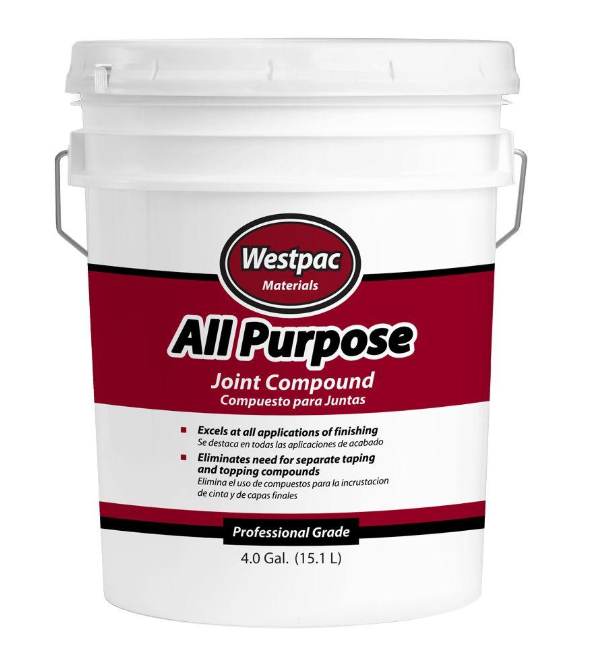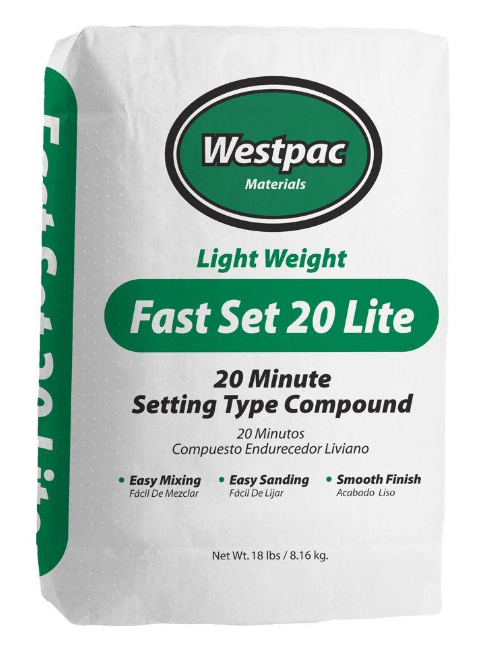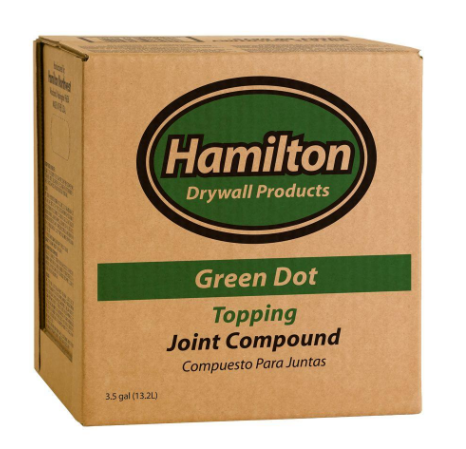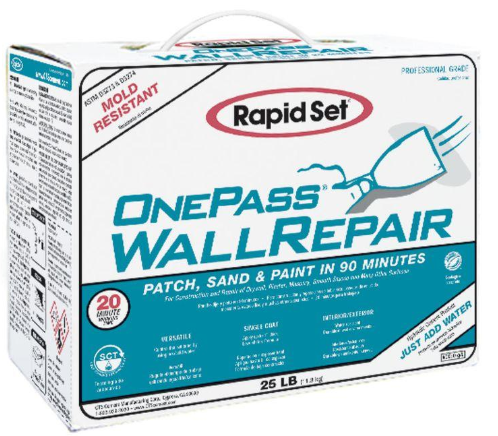At Northwestern Contractors, we do a LOT of drywall repair in Vancouver WA. We often have 4-6 different kinds of joint compound or “mud” in the back of our van. That is quite a selection and it may lead you to ask which kind of mud is used and why? Joint compound is a gypsum based, batter like substance that is used for fusing drywall panels together. When new drywall panels are installed, the joints are covered with tape and typically coated three times with joint compound. After the application of joint compound is complete, the excess is sanded off and you are left with one monolithic wall. Proper application of joint compound is extremely important for achieving a finished look.
Joint compound is also used for a typical drywall repair, which is the topic of this post. We use different kinds of joint compound based on the specific wall repair. Let’s talk about what kind of joint compound we use and under what circumstances they are used for.
All Purpose

All purpose joint compound is the most commonly used mud. It comes pre-mixed and ready to apply our of the bucket. All purpose is almost always our base coat when applying over taped joints as it contains glue and will always stick to walls. We use all purpose as our base coat for skim coating as well. The draw backs are, all purpose is harder to sand than light weight compounds or topping, more brittle then hot mud and takes longer to dry. Expect all purpose joint compound to dry in 12-18 hours depending on temperature and humidity levels.
Hot Mud

Fast setting mud or “hot mud” is our preferred mud for your standard drywall repair. Fast setting mud comes in powder form and must be mixed with water before application. Hot mud hardens much faster than premixed muds and toppings, as it contains a chemical activator. Fast setting mud comes in multiple drying times. Common drying times are: 5 minute, 20 minute, 40 minute, and 90 minute. Note: the drying times specified on the bags refer to the amount of time it takes to start “setting up”. If the drying time says 20 minutes like the one in the picture, that does not mean you will be able to sand in 20 minutes. It simply means the mud will be hard enough for you to apply another coat. Hot mud is beneficial because it hardens quickly and is less brittle than all purpose and topping. Fast setting mud is great for filling large holes and cracks!

Topping
We love topping, and use it for our finish coats when installing and repairing drywall. A finish coat refers to the last or second to last coats of mud. Topping is not as hard and strong as all purpose but it is much easier to sand. We use a lot of topping!
Plaster

We do not use plaster often but we do carry it with us just in case. We use a plaster “like” product called One Pass Wall Repair from Home Depot . This product contains a cement additive so it dries fast and hard. Unlike your typical hot mud, One Pass is ready to sand withing a couple hours. This product works great for repairing drywall on a time crunch.
Conclusion
In this post we covered a general knowledge level of information. There is much more to be said about joint compound. We cover the more specific information in our job posts, which document different jobs we do for clients. Thanks for reading and check us out if you would like us to give you a quote for work on your property!

